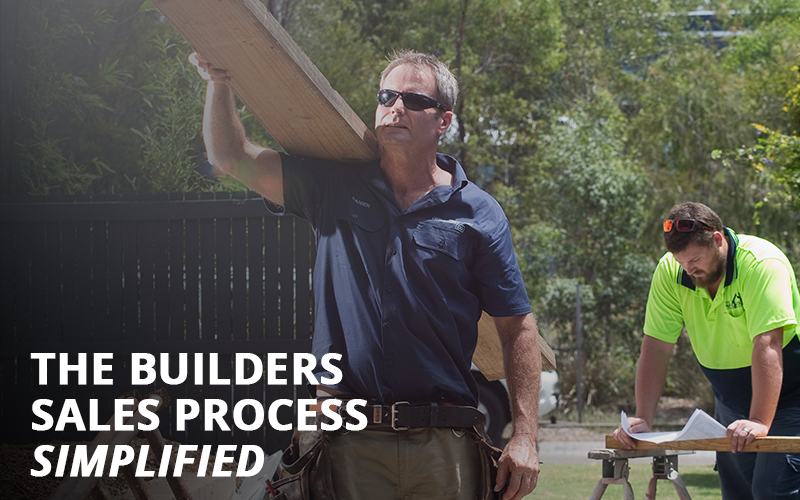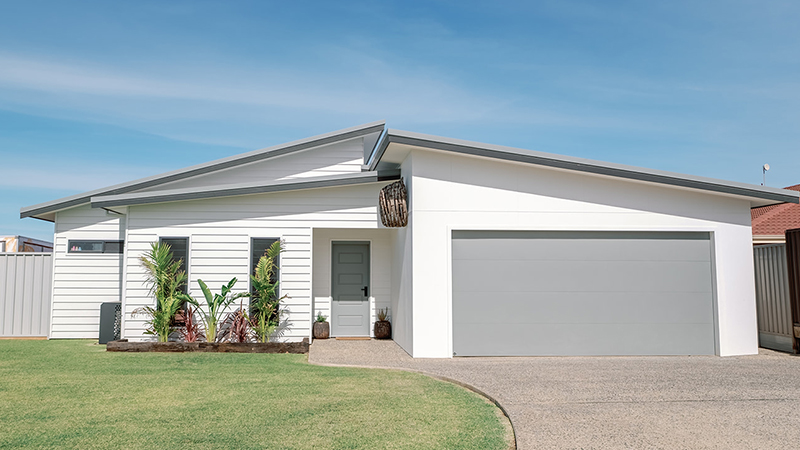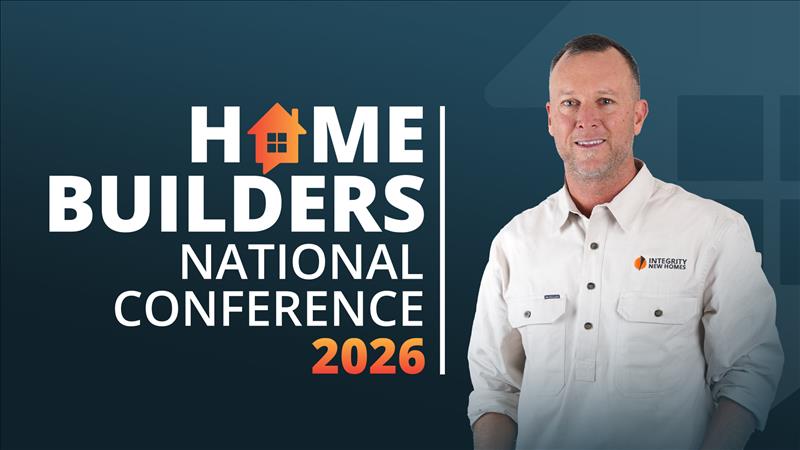
Sales for most builders come with challenges. It is something that we feel all builders will struggle with as we learn to not only build stunning homes but also run successful businesses.
The sales challenge is also somewhat self-inflicted. Most builders won’t put a system in place to generate, organise and action sales leads. This leads to setting a culture for the business that allows clients to take a builder’s time for granted. This generally leaves the builder asking, “why is this the case?” when the foundation of the issue is largely due to the builder’s neglect of having a successful sales system.
We wanted to share our insight on why these issues arise and how to build your business in a way that supports growth and minimises friction.
Most new home clients are happy to take your time. It could be after hours, through the week or even part of your weekend. Most clients won’t put the same level of value on your time as you do. This is a significant problem for us as builders because our time is a valuable commodity.
The less time we spend in the sales journey the more time we can spend building our business or creating healthy lifestyle choices that benefit the builder and the business.
How to solve the problem of giving clients an excessive amount of time in the sales journey is to systemise the sales process.
Firstly, we recognise that every client is unique, every build varies, and each sales process may take a different shape and outcome. What we outlay below are steps to assist in the typical sales journey and how builders can navigate the process to benefit their business.
First Contact
Every sales journey starts with a client making first contact with your business. This can happen through personal connections with friends who have just built with you, digital and print advertising, social media, or other creative ways you present your business to the public.
The true test of how successful your first contact is can be measured by what happens after the first contact.
The initial interaction between builder and potential client sets the tone for what the sales process and the build process will look and feel like.
When dealing with other professionals outside the building sector we generally find ourselves making first contact with someone who is connected to sales. This could be a receptionist, administration staff or sales manager.
These people are hired for a multitude of reasons, but one of the significant advantages these employees offer is to gatekeep clients from absorbing your valuable time.
As a builder, your time is more valuable outside of the sales process, yet for most builders, the sales process takes too much of your valuable time.
Engaging clients with valuable time does not often reciprocate that they will value that time.
To create the best environment for the sales process for the client ideally first contact between the client and your business will be with someone other than yourself. This could be administration staff, a sales person or an assistant. These people should be able to take the lead on the next few steps.
Survey/questionnaire email
The next step aims to qualify which clients your business should invest their time into. Using a survey or a questionnaire allows you to quickly and accurately determine where clients are at in the process, and how much potential there is to build a new home and create a valuable transaction of time, resources and finances between your business and the client.
The iGyro client survey process can be automated every time someone engages you digitally or maybe something a team member can manually send to a client. Either way, you are saving time and receiving important information on where best to invest your valuable time in the sales process.
Surveys are generally easy to complete and can be received, filled in and submitted on any digital device.
The survey allows you to see how genuine a sales lead is by allowing the client to take the initial step in investing their time into the sales process.
Audition Call
Once you receive the survey back you can make the decision to engage the client further or refer them to someone else. The Audition call allows for a team member to connect with the client to assist them in the journey of going to the next step in the sales process. With this Audition call being made by a team member, the aim is to set up a meeting time between the client and the builder.
The Audition call’s purpose is to acknowledge that your business has received the survey, building some repour going through the survey questions and booking a time to meet with you, the trusted professional.
These meetings generally happen on the site of the proposed new home or display home, but with a social shift and increase in technology, there has also been an increase in this taking place digital via video call.
One of the keys to building our reputation as industry professionals is by presenting ourselves in a professional way. The booking of this meeting and specifically, the timing of this booking is a fantastic opportunity to set the tone with the client that your time as a builder is valuable.
Setting a meeting time, a day or two after the call tells the client that you aren’t very busy. This may lead to feelings from the client that you aren’t a trusted professional because you don’t have work at present.
Giving yourself a 7–10-day lead time for the meeting sends a strong message to the client. My time is valuable, yet I am not so busy that clients are neglected.
It is important for you, the builder, to give the client the timing framework for when this meeting takes place. Tuesday morning? Thursday afternoon? Give options but set the time specifics. This will also solidify to the client that your time is valuable.
Send hardcopy of the design magazine
One of the other reasons we want to give ourselves some time between the Audition call and the Meeting time is to give ourselves some time to send something physical to the client.
Depending on the nature of the enquiry this will determine what you are going to send.
If the client has not made it clear that they have a design selected, then sending through a Design selection booklet would be a great choice.
If you know the client is building a custom home, then sending something like an inclusions document may be worthwhile.
A corporate profile or industry information may also be a great physical document to share with the client at this stage of the sales journey.
There are two reasons why it is important to send something hardcopy to a potential client.
1. Most of the sales interaction takes place digitally. Email, phone calls, surveys, video calls. We find it helps the sales journey and shows you are intentional in connecting with this client if something physical is sent to the potential client.
2. Let the physical marketing document do some of the heavy lifting. Sending a physical copy of information creates a presence in the client's home where they can reference your work and your information constantly.
Email meeting agenda and confirm meeting time
The day prior to your meeting is the perfect time to re-engage your client. We find being intentionally about this interaction yields fantastic results.
Use this interaction to do two things:
1. Confirm the meeting time.
2. Send the client an agenda for the meeting.
Setting an agenda allows you to be on the front foot and allows you to be in control of the meeting. It is also a helpful tool to ensure both yourself and client discuss all the necessary things at this stage of the sales journey.
What we want to do as industry professionals is continuing to set the tone within the sales journey. Doing so ensures the client values your time, your level of professionalism and the business.
The intentionality you bring to the sales journey will be expected in the build and allow for higher levels of confidence in you building the clients home.
It also helps to set a finishing time for a meeting. We have all been in meetings that have continued well past their usefulness. An agenda helps bring a conclusion to your time together.
Site / video meeting
Everything up to this point in the sales journey can – and should – be organised and outworked by a team member. It is now your time to engage the client directly.
As the meeting takes place the aim is to”
1. Run through the agenda
Have the agenda visible. Have a pen and notepad out and take notes as items are discussed. This is a great communication opportunity to have the client experience your intention for the build ahead.
2. Complete a Site Inspection Report
If onsite, this is the perfect time for your initial Site Inspection Report.
3. Take extensive site photos
Creating detailed records of the site, and the site inspection is important. It is a normal process for clients to circle back 6 to 12 months into the process with new information and having photos and information from the site visit will be helpful in creating the outcomes required for this build.
4. Signed Preliminary Agreement
The key objective of this meeting is to have the client sign a preliminary agreement.
It would be a foolish endeavour to do all this work without giving the cline the opportunity to sign a preliminary agreement and start the next stage of the sales journey for the build.
If you can get a signed preliminary agreement at this stage of the sales process, we believe that there will be an 80% chance of the client signing a building contract and you building their new home.
Design – Inclusions – Price
Once a preliminary agreement has been signed, we can move into the Design, Inclusion and pricing stage of our sales process.
You are now coming back to the client with a strong position regarding design, what is included in their home and how much this home will cost to build.
We can now start the discussion around creating a beautiful home that is agreed upon by the client and leads them to sign a building contract.
It is at this stage that the time you are investing in the client is truly valuable.
One of the key aspects of the sales approach currently is resolving objections. At this stage, the client will be objecting to and questioning many aspects of the designs, inclusions, and pricing. This is all part of the process of creating the best outcome for yourself and the client.
This is also a valuable time to offer unique points of difference or unique value propositions that make you a great choice for building the client’s home. Finding and delivering on unique ways to bring value to the client gives you the best opportunity to solidify the transaction of this sales.
The client will be continuing to shop for other builders at this time. If you can stand out and deliver on unique value propositions it will go a long way to having the client sign a building contract with you.
Design – Inclusions – Price (repeat)
The process above may take repeating to progress the client to a place of confidence to request a building contract.
The Building Contract
For our builders, we systemise our building contract through DocuSign. This allows both the client and the builder to have confidence in accessing both digital and if preferred a physical copy of the building contract.
We hope to encourage builders to take the pressure out of new home sales by following this typical sales process, managing your valuable time and delivering fantastic outcomes for clients.




